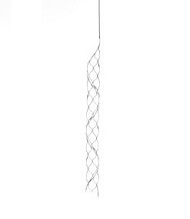
NeuroVasc Technologies has announced that the first patient has been treated in a pivotal randomised controlled trial (RCT) in China, which will evaluate the safety and efficacy of the ENVI-SR mechanical thrombectomy system (ENVI-SR)—a stent retriever for the removal of blood clots in patients with acute ischaemic stroke due to large vessel occlusion.
The procedure was performed by Zhao-Shuo Li, associate professor of the Stroke Center led by Tian-Xiao Li at the Henan Province People’s Hospital in Zhengzhou, China.
“We are very pleased to begin this study to evaluate ENVI-SR, which has a unique segmented design,” said Zhao-Shuo Li, who is also deputy director of the Interventional Department at Henan Provincial People’s Hospital. “We are continuously working to improve treatment for our patients through both our tools and techniques. The ENVI-SR was designed to address the gaps that we have found with traditional stent retrievers and we are very excited to have the opportunity to investigate this new device.”
The study is a prospective, multicentre RCT to evaluate the safety and efficacy of NeuroVasc’s mechanical thrombectomy system for the endovascular treatment of acute ischaemic stroke. The study will compare the next-generation ENVI-SR with Solitaire (Medtronic).
The results of the study will support National Medical Products Administration (NMPA) market approval for the ENVI-SR device in China, further expanding the company’s commercial footprint and providing a strong foundation for NeuroVasc’s future pipeline of game-changing neurovascular technologies, a press release states.
“The initiation of this clinical trial in China is an important milestone for our new-generation mechanical thrombectomy technology,” said Jim Ma, CEO of NeuroVasc. “We are pleased with this progress as the NeuroVasc ENVI-SR device has the potential to improve patient outcomes for the management of acute ischaemic stroke.”










